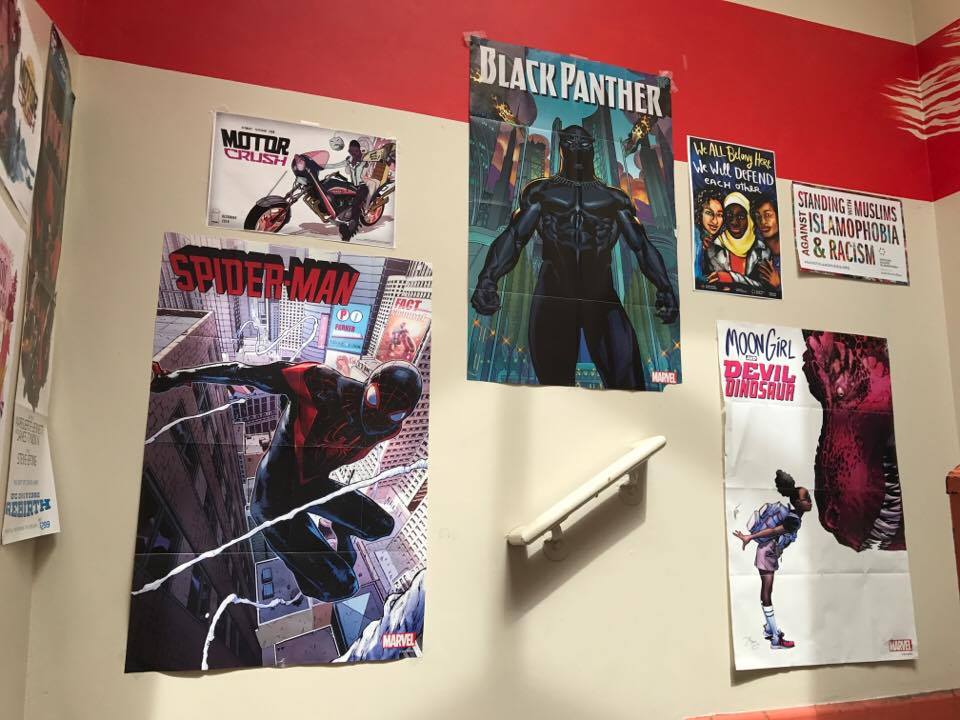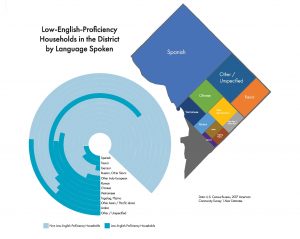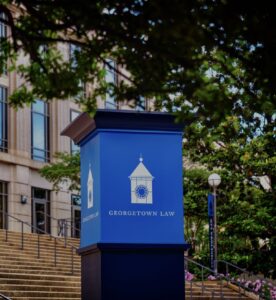.
From its modest perch above a Subway sandwich shop in Dupont Circle, Fantom Comics supplies D.C. with the newest and latest in the comic book world. But amid tales of heroic feats and epic galactic battles, this indie comic store aims to bring into the mainstream stories of even greater importance. Namely, that of marginalized minorities.
Through its queer, women’s, and Black Panther book clubs, the store provides a forum for dialogue amongst members of marginalized communities. “I feel like Fantom is the one space where you can come in and immediately be accepted,” Paul Branon, a Fantom employee, said.
“We try to be a very welcoming, open, and inclusive environment,” general manager Jake Shapiro said. “You can see from the people here that we represent all different genders, ethnicities, and sexualities because we believe comic books are for everyone.”
Fantom’s model matches the efforts made in recent years to diversify and expand the range of representation in comics, which historically has been dominated by straight, white, male perspectives. A commitment to forming an inclusive, multicultural readership also makes Fantom unique. “People are drawn to us because we don’t fit people’s expectations of what a comic book store is,” Shapiro said.
Raven Smith, an employee at Fantom, agreed. “For most of the comic book stores that I had visited, nobody really sat down and talked, nobody really engaged with you,” Smith said. “And it was like going to the grocery store, there wasn’t anything to it. But there’s such a welcoming community here.”
Aside from providing a safe space, Fantom also participates in political movements and protests in support of marginalized groups.
On Inauguration Day, Fantom raised a pride flag and a Black Lives Matter flag and designated itself online as an official safe space for protesters. They supplied free food, water, first-aid, and invited people to openly discuss their political views.
“I actually got a lot of pushback from my bosses on that be- cause, of course, as a small business you don’t want to take political stances because you don’t want to worry about alienating people,” Shapiro said. “We did it because we truly care about it. And almost everyone here is either a person of color or Jewish, so that I feel that it directly affects all of us.”
When GOP members pushed to defund Planned Parenthood in January, the store donated 15 percent of its overall sales that day and 100 percent of its proceeds from comics featuring Women’s History Month covers to Planned Parenthood of Metropolitan Washington.
Fantom’s engaging community mirrors the enormous strides the comic book world has made to diversify its characters in the face of a homogeneous fandom. In 2011, Miles Morales, a black Hispanic teenager, replaced Peter Parker as the Ultimate Spider-Man. Alan Scott’s Green Lantern kissed his boyfriend in a shocking 2012 reveal of Marvel’s first openly gay character.
In 2014, Kamala Khan, a young Muslim Pakistani-American, became the new Ms. Marvel. The mantle of Thor, arguably the epitome of comic book hypermasculinity, passed onto Jane Foster the same year. A year later, Spider-Gwen debuted on Earth-616 after Peter Parker’s classmate Gwen Stacy also received a bite from a radioactive spider. And last year, the franchise introduced Iron Man’s successor, Riri “Ironheart” Williams, a young black woman who managed to reverse-engineer Tony Stark’s suit in her MIT dorm room.
Marvel has moved to renew these efforts to reach a diverse audience with an “All New, All Different” branding initiative in 2015.
While some fans have rejoiced at this influx of minority characters, others have decried the replacement of their childhood heroes as “political correctness gone mad.” In a 2014 San Francisco Weekly parody of Marvel’s press release, columnist Benjamin Wachs wrote, “Beginning next year, Wolverine will—once he comes back to life—be a transgender Samoan atheist whose bones are made out of 100 percent recycled metal.”
Shapiro expressed caution in attributing these trends to progress in social justice.
“When you go back to the civil rights movement, a lot of restaurants desegregated, not out of the kindness of their hearts, but because they realized they could make more money if they were willing to serve black people,” Shapiro said. “But there are definitely some good people who want to see good change. I know one of the people pushing Ms. Marvel is one of the major editors at Marvel, Sana Amanat, who’s a Muslim American woman.”
Likewise, Caetlin Benson-Allott, a Georgetown professor of Film and Media Studies, cautioned that pop culture diversity initiatives often run the risk of tokenism, advising fans to read critically.
“Did the plotlines change? Specically, are the plotlines meaningful with respect to political issues about race, diversity, prejudice, and disenfranchisement?” Benson-Allott said. “Has race or ethnic discrimination become a meaningful part of the world in the comics? Or is it being treated like a checkbox I would mark off? That would be the test I would apply.”
In regards to these questions, Smith is optimistic that new minority characters are playing much more than perfunctory roles in comic culture.
“Ms. Marvel, for example, broke so many industry records. It had seven subsequent printings of the first issue because not only girls and Muslims, but everyone was buying it and talking about it—and for good reason,” Smith said. “It’s a really good superhero story that also deals with the real struggles of religious and ethnic minorities.”
Fantom witnessed a similar outpour of excitement surrounding the superhero Black Panther. When the first volume came out, Fantom’s stock of 300 copies, including their emergency shipment, sold out within days.
“We saw so many people who were interested in this character and who had a lot of feelings about him, so we decided to have a book club on it. And the very first Black Panther book club, this whole section was filled up with people from all walks of life—students, parents, social workers, teachers, everybody,” Smith said, gesturing around the room.
Entertainment aside, comics serve as a medium of social commentary on American cultural history is nothing new.
The medium’s political hues can be identified in comic book’s earliest characters. Born in the midst of the Great Depression, America’s first superheroes embodied values held dearly by their largely Jewish-American creators. Superman, the “ultimate alien,” was created by Jerry Siegel and Joe Schuster in response to anti-immigrant sentiment in the 1930s. Captain America, conceived by Joe Simon and Jack Kirby, directed attention towards foreign threats to democracy and battled Nazis in the hopes of nudging forward a stubbornly isolationist America during World War II.
Stan Lee’s X-Men, formed during the civil rights movement, were genetic deviants whose struggles reflected the social and cultural marginalization faced by minority groups. Similarly, characters such as Spider-Man, Wonder Woman, and the Fantastic Four, equally complex and beloved throughout the decades, have charted various aspects of America’s cultural history.
While superheroes have historically been associated with world-saving struggles, for Fantom employees, contemporary minority heroes operate at a more relatable scale.
“Kamala Khan, for example, is a regular 16-year-old girl from Jersey with everyday problems,” said Smith of the new Ms. Marvel. “She loves being on the internet, she reads fan fictions, she’s just a goofy regular teenager and I don’t think comic book readers had seen that in a really long time.”
Smith believes that this ripple effect has led to more stories featuring girls and women of color as well as creators of color working in franchises such as Marvel, DC, Boom!, and Image.
“People are reading this story of a Muslim girl and seeing themselves in her. On one hand it’s personally relatable, but then society as a whole goes ‘oh, so we can tell those stories.’ People do want to hear these voices.”
Similarly, Branon noted that Green Arrow is his favorite hero because of his relatability. “He’s essentially Bernie Sanders if he was a superhero. He fights for the lower and middle classes, the common people. He always sticks up for the little guy and his villains are not supervillains but people like drug dealers and corrupt landlords—the real villains,” Branon said.
Fantom’s staff recognizes a larger importance of relevance with respect to these heroes, especially for younger audiences. In particular, for the staff, the accessibility of new minority heroes has helped children to visualize problems in society and how to address them. “It presents real-world issues in a way that is digestible,” Smith said. “You don’t have to dumb down material for kids to get it or be super intense or violent to teach a lesson.”
“These characters of different genders, sexual orientations, and races remind you that they are real people,” Branon said. “It’s easier for you to identify with them, because not everyone is a straight white male, and they can also serve as role models for younger children.”
In the wake of the recent election, many have once again turned to comic book imagery as a vehicle of social justice. One recent piece of fan art depicts heroes such as Superman and Wonder Woman, labeled “refugee” and “immigrant” respectively, protesting Trump’s executive travel ban.
Another set of images depicts adaptations of the iconic cover of Captain America #1 (1941), which shows the star-spangled hero punching Hitler in the face, that instead show Donald Trump, Steve Bannon, or other members of the administration receiving the blow. In one popular version, Ms. Marvel delivers the punch.
Donald Trump appeared as a super villain in Marvel’s new Spider-Gwen (2016) series, debuting as the devious Mental Organism Designed as America’s King (MODAAK). Sprouting a grotesquely enormous head and tiny hands, MODAAK throws insults such as “foreign filth” as puffs of steam shoot from his ears. His appearance is followed by a clobbering at the hands of none other than Samantha Wilson, a young black Captain America from an alternate Marvel universe.
While amusing, Benson-Allott believes these trends point towards a more ominous message regarding the current political climate.
“There’s been a stronger rise in populism and nationalism during the campaign,” Benson- Allott said. “So there’s been an increase in anti-refugee and racist and xenophobic violence over the past year, although I think we would do well to make connections between that the anti-black violence that have galvanized movements like Black Lives Matter. The rise in hate crimes in the U.S. over the last year has been tracked by the ACLU and the Southern Poverty Law Center.”
Comic books therefore occupy a unique space between idealism and realism, a vantage point from which readers can simultaneously look to the past and dream of the future. As such, it tells the American story not in spite of toeing the line between fantasy and reality, but because of it. In a climate marked by intense political rhetoric, comic book stories and stores alike are attempting to foster a dialogue of building a more inclusive America.
All photos by Amy Meng





